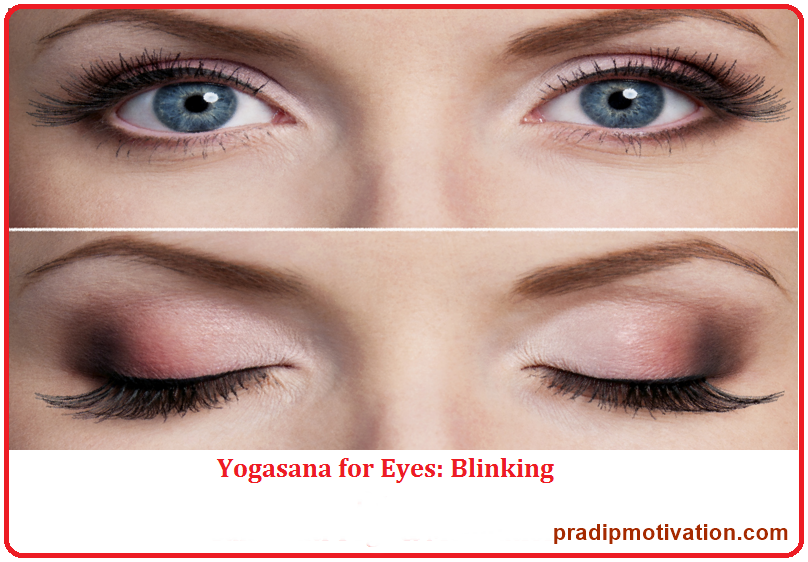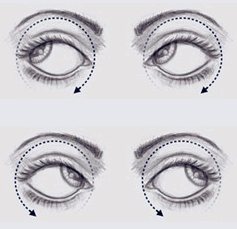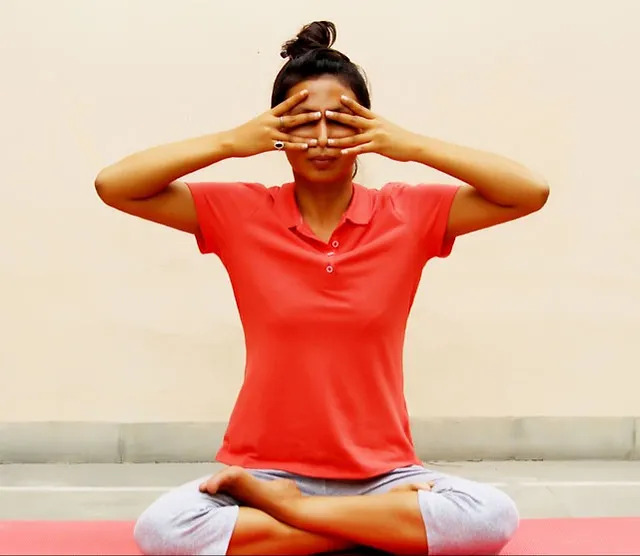Maintaining good eyesight naturally through a combination of a healthy diet and yoga asanas is a total approach to support your eye health. Your eyes are essential organs that require proper nutrition and care to function perfectly throughout your life. In this complete guide, we will explore how you can maintain and increase your eyesight through diet and yoga asanas.
Eye Health Essentials
Part 1: The Importance of Eye Health

Your eyes are complex structures that enable you to perceive the world around you. Proper vision is crucial for daily tasks, safety, and overall quality of life. To maintain good eyesight naturally, it’s essential to understand the factors that contribute to eye health and how diet and yoga can play a significant role in conserving and enhancing it.
Part 2: Diet for Healthy Eyes

A balanced and nutritious diet is fundamental for overall health, including your eyes. Certain nutrients, antioxidants, and vitamins are particularly beneficial for eye health:
1. Vitamin A: This vitamin is essential for maintaining good vision, especially in low-light conditions. Foods rich in vitamin A include carrots, sweet potatoes, spinach, and cabbage.
2. Vitamin C: An antioxidant that helps protect the eyes from oxidative damage. Citrus fruits, strawberries, and bell peppers are excellent sources.
3. Vitamin E: Another antioxidant that supports eye health by protecting cells from damage. Foods like almonds, sunflower seeds, and spinach contain vitamin E.
4. Omega-3 Fatty Acids: These healthy fats can reduce the risk of eye conditions like macular degeneration and dry eyes. Fatty fish such as salmon, mackerel, and flaxseeds are rich sources.
5. Lutein and Zeaxanthin: These carotenoids help protect the eyes from harmful UV rays and blue light. Foods like spinach, kale, and eggs contain these nutrients.
6. Zinc: Essential for maintaining the health of the retina. Foods like lean meats, whole grains, and nuts are good sources of zinc.
7. Antioxidants: Antioxidants like beta-carotene, selenium, and bioflavonoids found in fruits and vegetables can help protect your eyes from free radical damage.
8. Hydration: Staying well-hydrated is crucial for preventing dry eyes. Drink plenty of water throughout the day.
Part 3: Incorporating Eye-Boosting Foods into Your Diet

To maintain good eyesight naturally, focus on incorporating these eye-boosting foods into your daily meals:
Leafy Greens: Spinach, kale, and collard greens are rich in lutein and zeaxanthin.
Carrots: Carrots are famous for their high beta-carotene content, which your body converts into vitamin A.
Citrus Fruits: Oranges, grapefruits, and lemons are excellent sources of vitamin C.
Berries: Blueberries, strawberries, and raspberries provide antioxidants that benefit eye health.
Nuts and Seeds: Almonds, sunflower seeds, and flaxseeds contain vitamin E and omega-3 fatty acids.
Fatty Fish: Salmon, mackerel, and trout are rich in omega-3 fatty acids.
Eggs: Eggs contain lutein, zeaxanthin, and zinc, which are beneficial for the eyes.
Bell Peppers: These colorful vegetables are packed with vitamin C.
Lean Meats and Whole Grains: These provide essential nutrients like zinc and selenium.
Part 4: Yoga Asanas for Healthy Eyes

In addition to a nutritious diet, yoga asanas can complement your efforts to maintain good eyesight naturally. Yoga helps improve circulation, reduce eye strain, and promote relaxation, all of which contribute to better eye health.
1. Palming:

Sit comfortably with your eyes closed.
Rub your palms together vigorously to generate heat.
Cup your warm palms gently over your closed eyes without applying pressure.
Relax, breathe deeply, and allow the warmth to soothe your eyes.
Practice this for a few minutes to relieve eye strain and relax your eye muscles.
2. Blinking:

Sit comfortably with your eyes open.
Blink your eyes rapidly for about 30 seconds.
This exercise helps moisten your eyes and reduce dryness, which is essential for maintaining good eyesight.
3. Eye Rotations:

Sit or stand with your back straight.
Slowly roll your eyes in a clockwise direction for a few rotations.
Then, switch to a counterclockwise rotation.
This exercise helps improve the flexibility and strength of the eye muscles.
4. Bhramari Pranayama (Bee Breath):

Sit in a comfortable posture with your back straight.
Close your eyes and gently plug your ears with your thumbs.
Inhale deeply through your nose.
Exhale slowly while making a humming sound like a bee.
Repeat this process several times.
Bhramari Pranayama calms the mind, reduces stress, and promotes relaxation, which is beneficial for eye health.
5. Simhasana (Lion Pose):

Sit on your heels with your knees apart.
Place your hands on your knees.
Inhale deeply through your nose.
Exhale forcefully while sticking out your tongue as far as possible.
Roar like a lion during the exhalation.
Repeat this a few times.
Simhasana relaxes facial muscles and can reduce tension around the eyes.
Part 5: Lifestyle Habits for Good Eye Health

In addition to diet and yoga, adopting certain lifestyle habits can help maintain good eyesight naturally:
1. Proper Screen Usage: When using digital devices, follow the 20-20-20 rule. Every 20 minutes, take a 20-second break, and focus on something at least 20 feet away to reduce eye strain.
2. UV Protection: Wear sunglasses that offer UV protection to shield your eyes from harmful UV rays when outdoors.
3. Rest and Sleep: Ensure you get enough sleep to allow your eyes to rest and rejuvenate.
4. Hydration: Stay adequately hydrated to prevent dry eyes, especially in dry or air-conditioned environments.
5. Avoid Smoking and Limit Alcohol: Smoking can have adverse effects on eye health, and excessive alcohol consumption can lead to eye problems.
6. Regular Eye Check-ups: Visit an eye specialist for regular check-ups to detect and address any vision issues early.
Part 6: Conclusion
Maintaining good eyesight naturally involves a holistic approach that combines a nutritious diet, yoga asanas, and healthy lifestyle habits. A diet rich in vitamins, minerals, antioxidants, and omega-3 fatty acids can provide the essential nutrients your eyes need. Yoga asanas can help reduce eye strain, improve circulation, and promote relaxation, all of which benefit eye health. Additionally, adopting proper screen usage, protecting your eyes from UV rays, staying hydrated, and getting enough rest are essential for maintaining optimal eye health. Remember that while these practices can support eye health, they may not correct vision problems, and it’s important to consult an eye specialist for personalized guidance and treatment if you have specific concerns about your eyesight. By incorporating these natural approaches into your daily routine, you can help preserve and enhance your eyesight for years to come.

Very informative 🙏🙏🙏🙏🙏